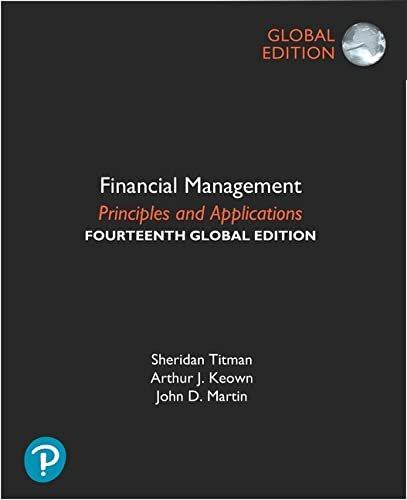Question
5. Project L requires an initial outlay at t = 0 of $70,000, its expected cash inflows are $16,000 per year for 9 years, and
5. Project L requires an initial outlay at t = 0 of $70,000, its expected cash inflows are $16,000 per year for 9 years, and its WACC is 13%. What is the project's discounted payback? Do not round intermediate calculations. Round your answer to two decimal places. Answer should be expressed in years.
9. Project S requires an initial outlay at t = 0 of $11,000, and its expected cash flows would be $7,000 per year for 5 years. Mutually exclusive Project L requires an initial outlay at t = 0 of $38,500, and its expected cash flows would be $9,500 per year for 5 years. If both projects have a WACC of 15%, which project would you recommend?
Select the correct answer.
| |||
| |||
| |||
| |||
|
10. A company is analyzing two mutually exclusive projects, S and L, with the following cash flows:
| 0 | 1 | 2 | 3 | 4 |
| Project S | -$1,000 | $889.21 | $250 | $10 | $10 |
| Project L | -$1,000 | $0 | $250 | $420 | $757.85 |
The company's WACC is 10.5%. What is the IRR of the better project? (Hint: The better project may or may not be the one with the higher IRR.) Round your answer to two decimal places.
Step by Step Solution
There are 3 Steps involved in it
Step: 1

Get Instant Access to Expert-Tailored Solutions
See step-by-step solutions with expert insights and AI powered tools for academic success
Step: 2

Step: 3

Ace Your Homework with AI
Get the answers you need in no time with our AI-driven, step-by-step assistance
Get Started


